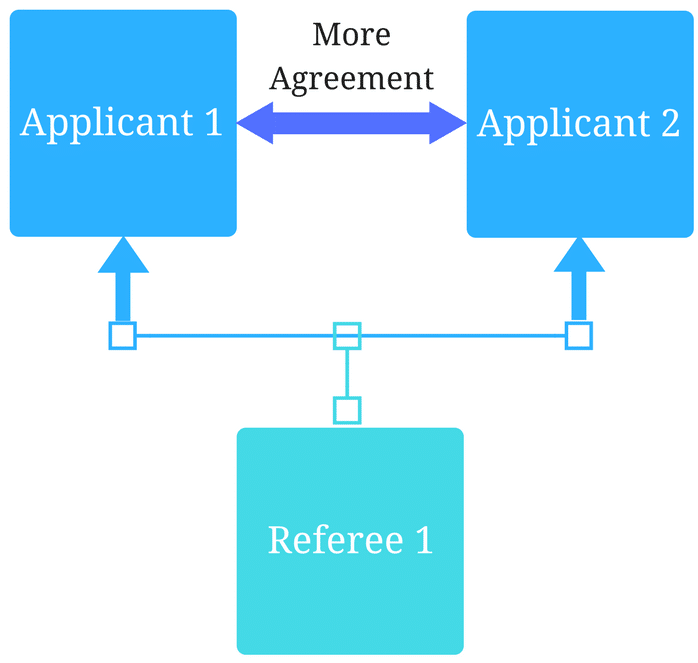The Key to Discovering Exceptional Future Alumni

October 26, 2023
To cultivate the future’s exceptional leaders and esteemed alumni, higher education institutions must prioritize a holistic admissions process that identifies not only successful students but future innovative and visionary trailblazers.
In yesterday’s Holistic Success Show we discussed how schools can effectively identify applicants who will go on to become exceptional future alumni. Dr. Kelly Dore, co-founder of Acuity Insights, co-creator of Casper, and VP, of Science and Innovation at Acuity Insights chatted with our Senior Director, Marketing Anju Visen-Singh about the steps higher education institutions should take to discover exceptional candidates.
What does an exceptional leader or alumni look like?
The essence of being an exceptional leader or alumni transcends a standard mold. Exceptionalism in leadership is varied; while some leaders are outstanding communicators, others shine in innovative problem-solving or excel in collaborative teamwork. In recent decades, our understanding of what makes someone exceptional has evolved. It’s no longer just about academics or a knowledge base, especially in an era where information is readily available at our fingertips. Exceptionality now involves the ability to harness knowledge effectively, to execute tasks with precision, whether leading a company, working in teams, or serving the community. It’s crucial to recognize that in our ever-evolving world, leaders need attributes beyond mere knowledge. The challenge is to identify and nurture those supplementary aspects that transform individuals into truly remarkable community members.
How can admissions professionals discover these types of exceptional individuals?
Admissions professionals need to consider their end goal: cultivating exceptional future professionals. From the onset, during admissions and recruitment, it’s vital to visualize the type of graduates they aim to nurture. This foresight should influence their program structure and dictate how they’ll nurture specific attributes during a student’s journey. A primary focus should be creating a varied student body, across multiple variables that include experiences and backgrounds, which enhances various aspects of learning, helps students recognize their strengths, and teaches them to collaborate effectively with peers. Ultimately, the admissions team should avoid a one-size-fits-all approach, and instead, consider the unique qualities each applicant can bring, ensuring their process supports this vision.
How do traditional admissions processes support or hinder finding applicants with the attributes with the right skills to succeed?
Traditional admissions processes have long been skewed towards evaluating academic achievements, often sidelining other significant attributes of an applicant. Over the decades, it’s been acknowledged that being an outstanding community member or professional extends beyond academics. Yet, admissions have heavily depended on metrics like GPA or standardized tests, primarily due to their ease of measurement. This approach has flaws. By setting academic cut-offs exceedingly high, either for management or to program prestige, many potential candidates who could excel are overlooked.
It’s worth evaluating whether these set standards truly reflect the minimum academic needs. Sole reliance on academic measurements risks overlooking the holistic essence of an applicant, only highlighting a fraction of their potential. Even other traditional methods, such as personal statements or reference letters, carry their own problems. Candidates with family connections or from certain backgrounds may have an edge, revealing the inherent limitations in these methods. This underscores the need for a more comprehensive and holistic admissions approach.
In addition, the rise of AI tools, such as ChatGPT, BARD, and others, challenges the authenticity of traditional admission components like personal statements. Can we truly ascertain that a personal statement reflects the genuine thoughts of an applicant and isn’t, in part, sculpted by AI or numerous external influencers? Beyond technology, these statements often turn into “village statements,” being more indicative of the collective advice and reviews the applicant receives than their personal insights.
How can admissions professionals enhance their likelihood of choosing the most suitable candidates for their programs?
To counter traditional methods and allow all applicants to be considered for programs, an approach gaining traction is the use of Situational Judgment Tests (SJTs). Historically used in the military and HR, these tests presented candidates with scenarios, requiring them to choose or rank predetermined responses. A modern adaptation, the Casper test, is an online SJT that offers flexibility in responses, allowing candidates to type or verbally describe their reaction to a situation and, crucially, explain their rationale. This approach taps into an individual’s life experiences and values. Two people might react differently to a scenario, shedding light on their unique strengths and rationale.
Notably, SJTs, especially Casper, have much smaller demographic differences compared to traditional measures, ensuring no group faces an inherent disadvantage due to factors beyond their control. Data shows that third-party coaching doesn’t boost Casper test performance, maintaining its fairness. While personal statements, which lack predictive value, demand significant effort from applicants and programs, Casper is written once and shared with multiple institutions, reducing the burden for all parties involved.
How is Casper evaluated?
The evaluation of applicants is enriched by a broad group of community members responsible for assessing them. These members will later gauge the professionalism of graduates as they integrate into the community. This system ensures two vital aspects: firstly, extensive training ensures raters judge fairly. Secondly, all applicants to a specific program are assessed in relation to each other, providing a comparative view of their performance against the applicant pool. Consequently, programs receive a consolidated Casper score for each applicant. This score, akin to a GPA or a standardized academic metric, is easily integrable into the admissions process. By incorporating this score, programs obtain a more holistic view of an applicant beyond just their academic achievements, offering insights into their overall persona from the outset.
Two Key Takeaways from this Episode of the Holistic Success Show
- Holistic Evaluation: Admissions teams should adopt a comprehensive assessment approach, considering not just academic achievements but also attributes indicative of future community leadership potential.
- Community Alignment: Integrate a form of ‘community interview’ or engagement to gauge if candidates resonate with community values and can
To listen to the full episode on the value of EPAs, visit our YouTube channel.
Related Articles

How interviews could be misleading your admissions...
Most schools consider the interview an important portion of their admissions process, hence a considerable…
Reference letters in academic admissions: useful o...
Because of the lack of innovation, there are often few opportunities to examine current legacy…
